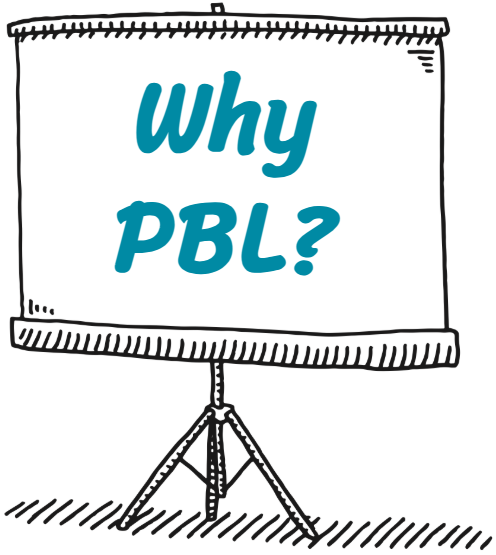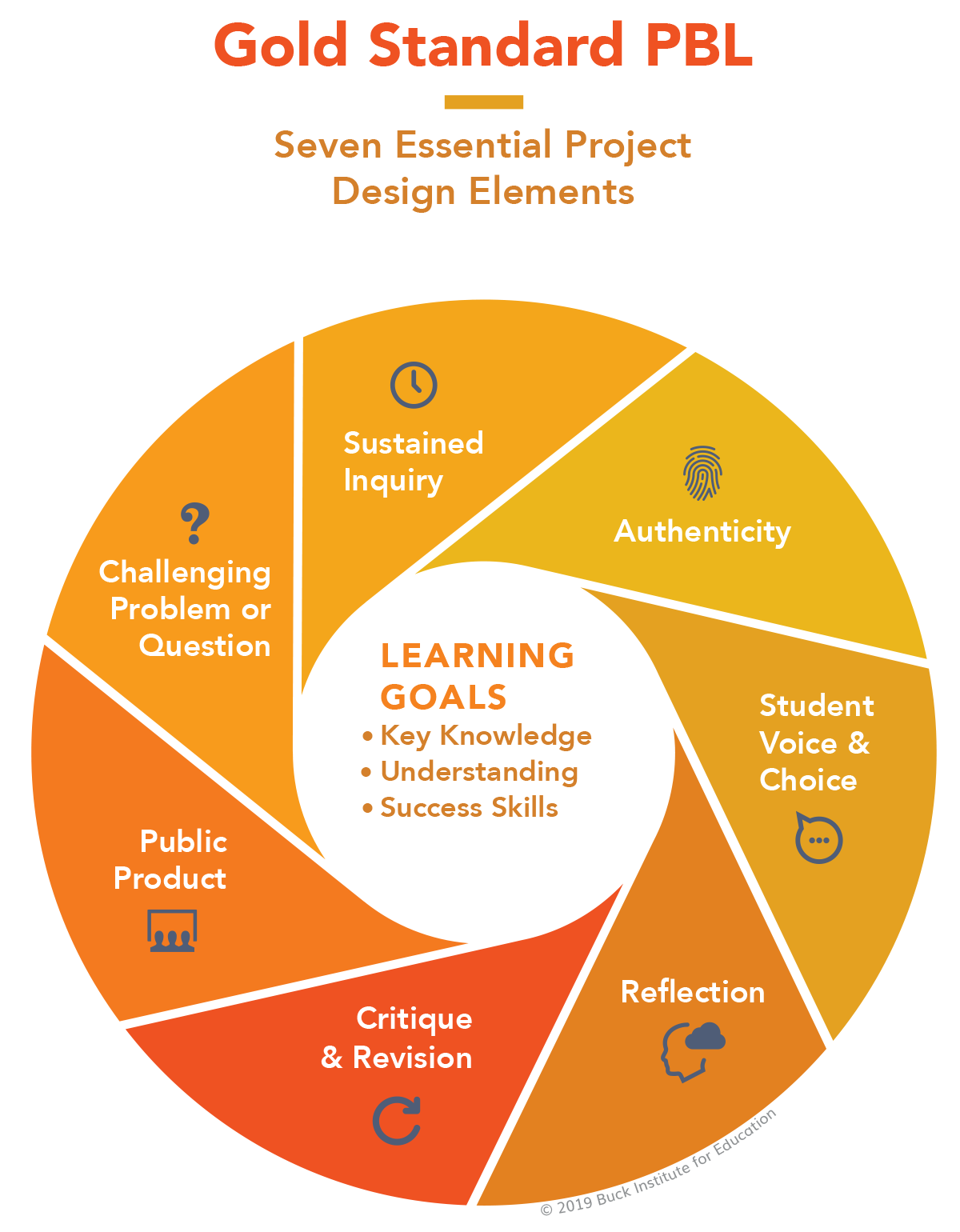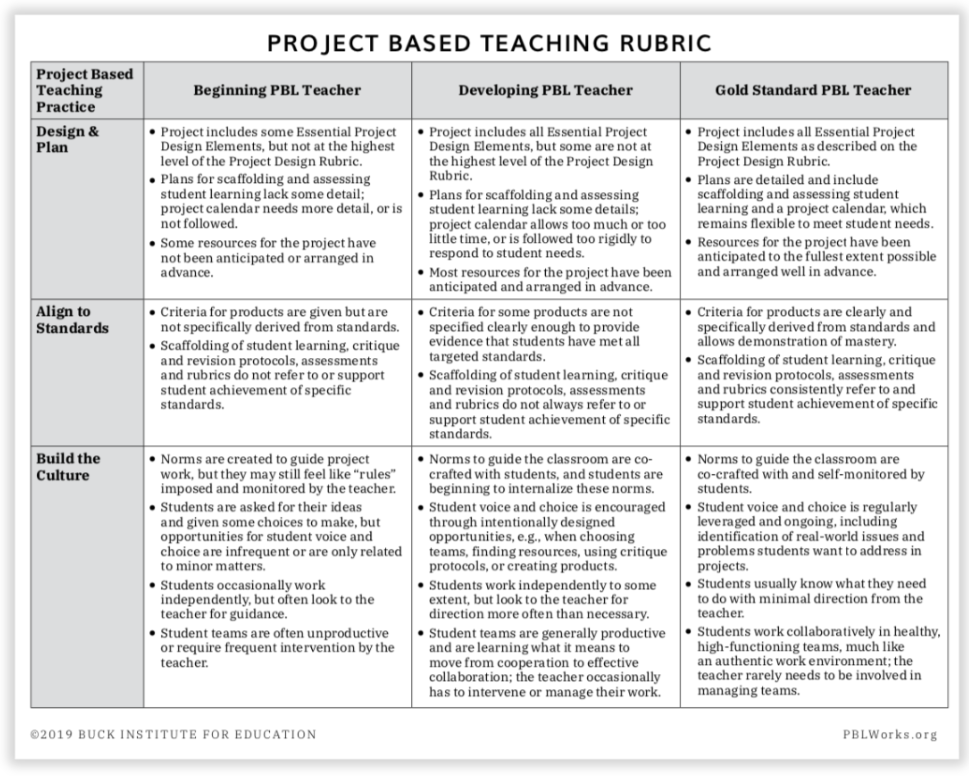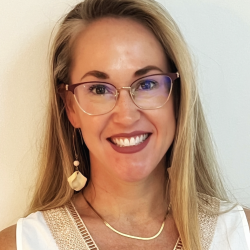
Administrators are no strangers to teacher turnover, but there’s now a broader workforce transformation that’s reshaping what education looks like. While turnover is becoming a defining feature of today’s educational landscape (and across industries as well), we also find ourselves operating within a five-generation workforce for the first time, offering its own opportunities and challenges.
At the same time, an increasing number of educators are entering classrooms without traditional preparation. School leaders are not just managing staff transitions, but a whole new workplace reality, all while being responsible for students’ academic success and workforce-ready skills. So the question becomes clear: How do you keep your Project Based Learning (PBL) plan strong and thriving amid this new reality?
As a school leader, it’s easy to perceive these changes as insurmountable barriers out of your control, but if you give yourself the permission to accept that the macro-level shifts are what they are—our new reality—you make space to see that there’s plenty within your sphere of influence. The key is to focus on building systems and cultures that promote a sense of belonging and are resilient, adaptive, and grounded in practices that make the most of your teacher talent while you have them.
Building a System That Thrives Despite High Turnover
| 1. Build a Culture of Clarity and Purpose |
 When educators understand why they’re doing what they’re doing—and how it connects to a larger mission—they’re more likely to stay engaged, even in challenging environments. Leaders across the system recognize that starting with a strong “why” is foundational to their success, but that the real power is in ensuring that all actions are aligned to clearly realize that vision.
When educators understand why they’re doing what they’re doing—and how it connects to a larger mission—they’re more likely to stay engaged, even in challenging environments. Leaders across the system recognize that starting with a strong “why” is foundational to their success, but that the real power is in ensuring that all actions are aligned to clearly realize that vision.
What’s in your control:
- Engage in a collaborative process to co-develop or revisit your school’s purpose & vision to mobilize people’s passions toward quality outcomes.
- Clearly & consistently communicate your schoolwide priorities and how PBL supports those goals.
- Develop consistent messaging about the “why” behind PBL—you can never say the good stuff enough!
- Create alignment between individual teacher goals and the broader school vision.
Try these strategies:
- Gather student testimonials about the impact of Project Based Learning on their experience at school. Use these bright spots at staff meetings, on social media, etc., to publicly remind staff and your community why PBL works in your school.
- Engage in a policy and initiatives audit. What are all the things “on a teacher’s plate” and how do they work within the context of PBL? Work to make broader meaning about the connections between PBL as a design and implementation framework and the core content, curriculum, and resources available to teachers. Communicate these connections explicitly to demonstrate that PBL isn’t “one more thing.”
- Develop a “bank” of possible goals connected to growing a teacher’s PBL practice as a starting point for vision-aligned goal development. Use this bank as a scaffold when supporting teachers in setting goals that are specific and authentic to them, while still supporting your school in moving toward its vision of success for all students.
| 2. Be Real About What’s Real |
Once that shared vision is set and deeply embedded in your school’s community and culture, you have to keep a constant pulse on your school’s reality. Knowing the gap between where you are and where you aspire to be is integral to building and reflecting on the plan to move your school closer to that shared vision. Peter Senge calls this a state of “creative tension” and that the space between your current reality and aspirations is where the possibility of innovation lies. Too little slack, and the status quo wins; too much slack, and your culture “snaps” with the unrealistic pressure. It’s a leader’s job to be real about what’s real to maintain the appropriate amount of pressure on the system so that progress toward your vision is supported and consistent.

Additionally, acknowledging the reality of your staff’s makeup and their experiences and paths to teaching at your school, while also pursuing unity and a “one team” culture, is important. The label of “long-term sub” or “uncertified teacher” can become a part of a person's teaching identity. If the expectations of those folks are visibly inconsistent with other educators, it sends a message about their place and your belief in their skill and longevity of their role, which could impact the beliefs they have about their place within the school culture and, ultimately, their self-efficacy, which we know is directly correlated to student outcomes. Access to high-quality professional learning, engaging in conversations about instruction, and reinforcing that everyone has a vital role in supporting every student is key.
What’s in your control:
- Assessing your school’s current reality through multiple data collection methods
- Getting to know your long-term subs and not-yet-certified staff—what are their strengths? How can you help them grow what’s good? What might motivate them to continue within the system?
- Articulating, sharing, and reinforcing high expectations for all educators
- Aligning professional learning with teachers’ areas of opportunity
- Establishing peer learning structures to celebrate expertise and foster peer-to-peer collaboration
Try these strategies:
- Introduce your staff to this construct from Peter Senge— “Creative Tension”. Lead a conversation about your school’s vision and an honest conversation about the current reality at your school using the Compass Points Protocol. Identifying what excites your staff about the vision, what worries them (or what is getting in the way of getting there), what questions they have, and what suggestions they might offer to move you along the path is a great way to foster inclusive dialogue and collective brainstorming.
- Engage in a protocol designed to help teachers dig deep to craft their own story of self and foster pride in their identity as educators. Consider the “Five Whys” protocol to help educators get as close as possible to identifying their own “why” and what brought them to education.

| 3. Invest in Just-in-Time Support and Onboarding |
 With more teachers entering the field through alternative pathways, you may be supporting educators who are passionate but still building foundational teaching skills. At PBLWorks, we encourage an approach called “The Dimmer Switch” that breaks down the Gold Standard PBL process into intentional learning about, practicing, reflecting on, and celebrating wins with the individual Essential Design Elements and Teaching Practices. Not only does this make the process feel more manageable, but it also ensures that PBL isn’t seen as an event but rather a mindset for how to design and facilitate high-quality student learning experiences.
With more teachers entering the field through alternative pathways, you may be supporting educators who are passionate but still building foundational teaching skills. At PBLWorks, we encourage an approach called “The Dimmer Switch” that breaks down the Gold Standard PBL process into intentional learning about, practicing, reflecting on, and celebrating wins with the individual Essential Design Elements and Teaching Practices. Not only does this make the process feel more manageable, but it also ensures that PBL isn’t seen as an event but rather a mindset for how to design and facilitate high-quality student learning experiences.
What’s in your control:
- Structured, scaffolded support of PBL skills.
- Peer mentorship and job-embedded coaching that reinforces PBL practices—because high-quality PBL is just good teaching!
- Create space for teachers to reflect, ask questions, and adapt their practice
- Build a library of resources to allow for easy access to self-guided resources. Use PBLWorks’ Resources page to begin that curation.
- Consider PBLWorks Teach for ready-made projects, resources, and embedded professional learning. (coming soon)
- Establish a space for existing projects, HQIM, student artifacts, etc. so new-to-you educators have a model of what success can look like.
Try these strategies:
- Have staff do a jigsaw read of the Essential Design Elements to identify a definition of their element and key attributes of the element to the Gold Standard PBL process. Then, have teachers take on the persona of their element and encourage them to walk around and “meet” three other elements, one at a time.
Ex: “Hi! I’m Sustained Inquiry! I help students engage in an ongoing process of posing questions, finding resources, and applying information throughout a project. I’m important because I keep student curiosity at the center.” To which their partner says, “Hi Sustained Inquiry, I’m Challenging Problem or Question. I articulate the challenge that students have to solve, help launch the inquiry process, and help students craft their first ‘Need to Know’ questions related to the project!”
Do a full-group debrief of the process to gauge what connections teachers made between the elements, identify “ahas,” and make space for questions.
- Pair new or less experienced teachers with a PBL “buddy” for the first semester—someone who can help troubleshoot, co-plan, or even co-teach a few lessons. Build in regular check-ins to support both teachers.
| 4. Make the Most of Your Team’s Strengths—Right Now |
 In a high-turnover environment, the best gift you can give your teachers is the opportunity to thrive while they’re with you. Teacher self-efficacy has a longstanding and rich research base and is linked to improved student outcomes (academic, motivation, and self-efficacy). It is also related to teacher persistence, enthusiasm, and commitment, which all have a connection to teacher retention! The related strategies shown to improve teacher self-efficacy include:
In a high-turnover environment, the best gift you can give your teachers is the opportunity to thrive while they’re with you. Teacher self-efficacy has a longstanding and rich research base and is linked to improved student outcomes (academic, motivation, and self-efficacy). It is also related to teacher persistence, enthusiasm, and commitment, which all have a connection to teacher retention! The related strategies shown to improve teacher self-efficacy include:
- Mastery experiences: experiences where teachers feel successful
- Vicarious experiences: where teachers have skills/strategies modeled by others
- Social persuasion: when teachers receive positive support, encouragement, and feedback from peers and leaders
What’s in your control:
- Identifying and leveraging individual teacher strengths to deepen PBL practice across classrooms in your school
- Creating flexible team structures that allow for collaboration and shared leadership
- Celebrating small wins and visible progress toward goals
Try these strategies:
Have teachers self-assess using the Project Based Teaching Practices Rubric and identify an area of strength, with evidence, and an area of opportunity, with a question they would ask someone else who sees that same area as a strength. Create anchor charts of the Teaching Practices to have teachers capture their strategies/evidence they identified. Then, engage in a Carousel Activity where teachers review all Teaching Practices and associated strategies to identify one thing they’ll try to grow in their area of opportunity. Use an exit ticket or Google Form to capture what each teacher is committed to trying. Follow up with individual teachers and remember to include staff meeting time shortly after this activity for teachers to share and celebrate the small wins.

- Conduct quick, informal “strengths snapshots” with your staff—short conversations or surveys to learn what excites them, where they feel confident, and where they’d like to grow. Use this information to group teams intentionally, delegate leadership roles, or design professional learning experiences that matter. Use your knowledge of teachers’ strengths to make intentional pairings so novice or new-to-PBL teachers can observe others in action. To reduce the angst sometimes associated with peer observations, make what the observer is looking for the right grain size and connect it to what the mentor teacher has identified as a strength. (And call it “peer learning” instead! Words matter—and if the focus is on what we’re learning from each other and less about what we see, the focus benefits both teachers.)
Leading With Stability in a Changing Landscape
You can’t control the trends in the labor market just as much as you can’t control when a great teacher chooses to move on. But you can create a school culture that holds steady through transition and a PBL model that adapts while staying strong.
By focusing on clarity, support, and talent maximization, you can turn workforce instability into meaningful, forward-thinking leadership moves that will ultimately impact your culture—and your students—for the better. In doing so, you ensure that while teachers are with you, they’re empowered to do their best work—and that your PBL culture not only survives, but grows stronger. And hey, who knows, maybe this emphasis on collective culture, efficacy, authenticity, and celebration is the thing that makes great teachers stay!

